Our December, 2022 program was canceled due to the illness of the speaker.
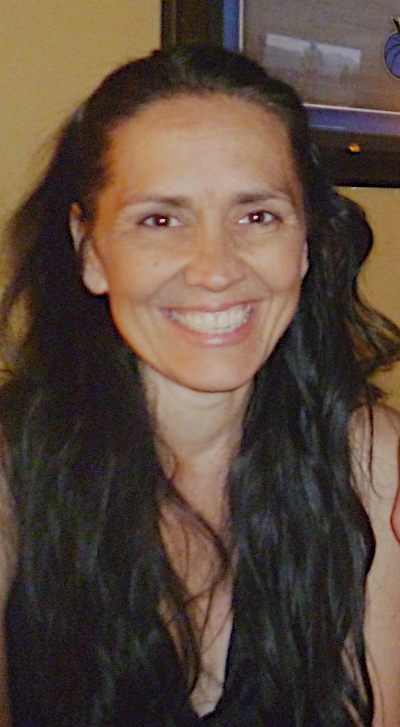
Today's emphasis is often on the struggles diverse groups have had throughout history. I want to shift that discussion to a positive affirmation of the hundreds of influences that indigenous peoples still have on all cultures in every day life; from a federal system of government to the earliest sunglasses—from the expansion of the Spanish Empire and the British Navy, to medicines such as aspirin and quinine.
Meet Dr. Lisa Uhlir
Dr. Uhlir is one of those individuals who love learning and would stay in school forever just studying if she could. This is most likely why her multiple degrees range from chemistry to Russian studies, to economics and political philosophy. Her original goal was to be a spy but the end of the Cold War and the Clinton hiring freeze on embedded spies halted that dream mid-hiring process with the CIA. Dr. Uhlir grew up in Northern Michigan and is an Ojibwa Native American from the Sugar Island Band. She has taught locally at UTA and UNT, and currently is a full tenured professor at TCC. She frequently speaks on issues from Native Boarding schools to Native healing.

The ancestry of the iconic, cattle-herding cowboy traces well beyond the American West—all the way back to the 8th century, when North Africans conquered Spain and brought the practice of working stock from the back of a horse to the New World.
Meet Michael R. Grauer
Michael R. Grauer is the McCasland Chair of Cowboy Culture/Curator of Cowboy Collections and Western Art at the National Cowboy & Western Heritage Museum in Oklahoma City, Oklahoma.
A Kansas native, Mr. Grauer holds a Bachelor of Fine Arts in painting and a Bachelor of Fine Arts in art history from the University of Kansas; the Master of Arts in art history from Southern Methodist University; and the Master of Arts in history from West Texas A&M University. He was the University of Kansas Kress Foundation Department of Art History's distinguished alumnus for 2012. He worked at the Smithsonian American Art Museum, before becoming curator of art and Western heritage and associate director for curatorial affairs at the Panhandle-Plains Historical Museum, Canyon, Texas, from 1987 to 2018. He was also Adjunct Lecturer in Western American Studies at West Texas A&M University. He joined the National Cowboy & Western Heritage Museum in Oklahoma City in September 2018. He has curated over 150 exhibitions on Western art, culture, and history and authored 65 publications, including The Dictionary of Texas Artists, 1700-1945, Rounded Up in Glory: Frank Reaugh, Texas Renaissance Man, and Making a Hand: The Art of H. D. Bugbee, which received the Western History Association Wrangler Award for Best Western Art Book for 2020. Mr. Grauer lectures on art, history, and culture across the American West. He does a living history cowboy presentation called "Cowboy Mike."
He serves as president of the Western Cattle Trail Association; vice-president of the International Chisholm Trail Association; on the boards of the Kansas Cowboy Hall of Fame, the National Drovers Hall of Fame; is a member of the research committee for the National Cowgirl Hall of Fame in Fort Worth; on the Charles M. Russell catalogue raisonne committee, and is a board member and on the executive committee for Westerners International.
He and his wife, Leslie Baker, live in Oklahoma City. He has three children, Matthew (33), Hannah (26), and Sarah (22), and four grandchildren, Otto, Ezra, Red, and Eloise Rae.
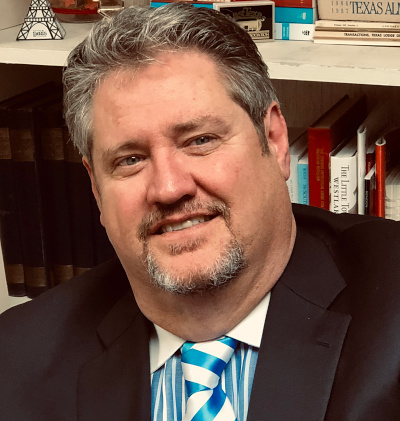
The Mallet Ranch, from its founding to the present, has followed the arc of most Texas ranches. It was an open-range operation that then transformed into one running blooded-stock—Herefords in this case—but also stocked its acres with sheep, divided it into farmland, and then the extraction of petroleum helped to save the operation and enrich the DeVitt family. It experienced booms and busts, fretted over droughts and floods, as well as fights in courtrooms. The Mallet then progressed to a modern corporation managed by a board of directors, and despite hardships that may have outnumbered the successes, perseveres through today. In other words, it is the story of a Texas ranch.
However, it is more than a ranch story. It is the story of a family that is both unique and conventional among Texas stock raisers. David M. DeVitt, like many before him, was not "born" to be a Texas cattleman. DeVitt began his career as a reporter in Brooklyn, New York of all places and decided to leave that behind to try his luck on the ranges of West Texas, a career move that must have seemed curious to his friends back in the Empire State. His first efforts—in the arid lands of the Permian Basin—were more hit than miss—so he moved his operations north into a region that had until recently before supported bison but was in its nascent stages of stocking cattle. He had to transition from open range to fenced pastures and once again faced adversities that rivaled attainment. Still he persisted.
Perhaps David DeVitt was just stubborn. If so, he certainly passed such a trait to his two daughters. Although Christine and Helen were raised in Fort Worth and spent a good part of their young adult lives in California, both must have learned the lesson that the land—and the Mallet Ranch—were part of their soul. When David DeVitt died in 1934 the Mallet Land and Cattle Company Board of Directors planned to sell the ranch and exit the cattle business on the South Plains, but they ran into an immovable object in such a strategy: Christine DeVitt. Her mother, Florence, along with Christine and Helen, had inherited David DeVitt's majority share of the Mallet operation. Florence and David had endured a difficult marriage and as a result she had spent the better part of the last two decades before her husband's death in California and thus had taken little interest in the business her husband operated in West Texas. The company's board believed there would be little opposition to their plans of liquidation, but they had not anticipated Christine's tenacity. She urged her mother and sister to keep their holdings and thus together they could control the board and its actions. Furthermore, Christine took on her father's role in operating the stock and farm operations of the ranch and vowed to continue to support the family as the then Great Depression ravaged profits of the isolated ranch on the semi-arid plains of northwest Texas. It would not be an easy venture for Miss DeVitt; she would have to endure almost constant opposition from her business partners, doubt from her mother and sister about such a direction, and years of a legal fight against her associates. In the end, Christine's resolve won out, and the Mallet Ranch stayed intact and Christine DeVitt became the operational force.
Fate often determines more in the direction of human endeavors than most realize. Such was the case with the Mallet. When David M. DeVitt established the Mallet Ranch he had no way of knowing the riches the land held beneath its bedrock. Christine DeVitt, when she and her sister were fighting for control of their inheritance, likely had no clue of those same potential fortunes. The Mallet Ranch was not the only historic Texas ranch that the discovery of oil and gas beneath its surface saved, but it is one of the most spectacular examples. Despite Christine DeVitt's insistence on continuing to operate the Mallet as her father had done before her, the ravages of the Great Depression, the vagaries of the cattle industry, and the capricious climatological challenges of agricultural pursuits in such an environment may have very well ended the operation or force Christine and the board of directors to divide it into sections to sell, a fate that had befallen numerous stock operations in Texas during the period. The Mallet found a savior underneath the harsh lands on which they had scattered cattle. The discovery of oil in 1938 on the ranch and the subsequent drilling of more than a thousand oil wells over the next few decades transformed the Mallet from a struggling enterprise into one of the most profitable of such entities in the nation.
Meet Scott Sosebee, Ph.D.
Scott Sosebee is a tried-and-true West Texan. He was born in Abilene, grew up in San Angelo, graduated from high school in Midland, and then went off to college at Texas Tech University. At Tech he earned his BA, MA, and Ph.D. degrees and then took a position at Stephen F. Austin State University in Nacogdoches. He is a Professor of History at SFA, where he is also the Executive Director of the East Texas Historical Association and the Executive Editor of the East Texas Historical Journal. He teaches undergraduate and graduate courses in Texas and Southern history at SFA, as well as the undergraduate history methodology course and a "Research, Writing, and Editing" graduate class. In addition to his faculty duties he is an active historian who is the author and/or editor of five books. His latest works, published in the last two years, are Henry C. 'Hank' Smith and the Cross B: The First Operation on the South Plains (Nancy and Ted Paup Ranching Heritage Series, Texas A&M Press, 2021), What Is It About Texas?: Essays on the Lone Star State(Stephen F. Austin State University Press, 2021), and More Than Running Cattle: The Mallet Ranch of the South Plains (The Grover Murray Studies in the Southwest Series, Texas Tech University Press, 2022). He is also the co-editor (with Paul H. Carlson) of the Nancy and Ted Paup Ranching Heritage Series with Texas A&M Press. He and his wife, Leslie Daniel, live in Nacogdoches.
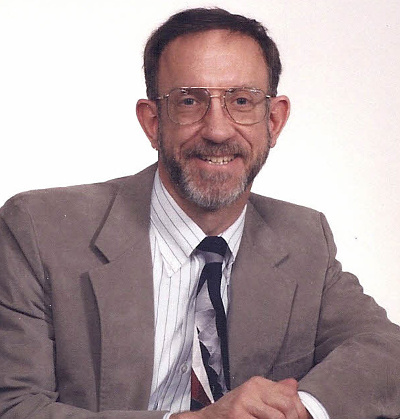
Frank and Tom McLaury were on the losing end of the most famous shootout in Western history. The Earp-friendly version that has come down to us in books and movies has them as ne'er-do-wells guilty of cattle rustling and probably other crimes. Generally unknown is that they had a brother, Will McLaury, who was a respected if not brilliant lawyer in Fort Worth. Were Frank and Tom gunned down just before leaving town to go to Fort Worth?
When he got the news of his brothers' death, Will rushed to Tombstone to help prosecute their killers. He didn't add much to the prosecution although he spent 2 months in that vain endeavor before giving up and returning to Fort Worth. The rest of the story is a fascinating footnote to the legend of the O.K. Corral. Perhaps if all 3 McLaury brothers had settled in Fort Worth, there would have been no shootout at the O.K. Corral.
Events in Tombstone have been researched endlessly by any number of historians over the years. Every stone it seems has been turned over. The Fort Worth connection has remained buried in old Fort Worth records until now.
Come out on August 16 and follow the story of the forgotten McLaury brother.
Meet Richard Selcer, Ph.D.
Dr. Richard Selcer was born in Fort Worth the same year that Leonard Brothers Department Store installed the city's first escalator and the statue of Will Rogers was dedicated in front of Will Rogers Coliseum (1950). He grew up soaking up the city's history by osmosis and has lived long enough now to be part of Fort Worth history. As an adult he has lived in several foreign climes — Austria, Bulgaria, the Ukraine, South Dakota — but he always returns to his Fort Worth roots.
He received his higher education at Austin College (Sherman, TX) and Texas Christian University (Fort Worth), graduating from Austin College with a B.A. in history in 1972 and an M.A. in education in 1973, and from TCU with a Ph.D. in 1980. He has taught at Tarrant County College, Dallas County Community College, Jarvis Christian College (Hawkins, TX), Cottey College (Nevada, MO), and City University (Austria, Ukraine, Bulgaria). For 30 years he split his time between teaching locally and in Eastern Europe. Most recently he has taught for Weatherford College, Tarrant County College, and Trinity Valley School. He is also a member of the Tarrant County Historical Commission.
Dr. Selcer has authored thirteen books and more than fifty magazine/journal articles. Most of his writing has been on the Civil War, Fort Worth, and the West. His book titles include Hell's Half-Acre: The Life and Legend of a Red-Light District (TCU, 1991), Lee vs. Pickett: Two Divided by War (Thomas Pubs., 1995), Legendary Watering Holes: The Saloons That Made Texas Famous (Texas A&M, 1994), Written in Blood, Vols. 1 & 2 (UNT Press, 2010, 2011), and Photographing Texas: The Swartz Brothers, 1880-1918 (Texas A&M University Press, 2019). His latest title is Fort Worth Stories (UNT Press, 2021). Long term, he is working on a biography of Confederate General George E. Pickett and a history of law enforcement in Texas' bad old days ("Law & Disorder on the Trinity").
Dr. Selcer is also a high-school basketball official and leads walking tours of Fort Worth. His favorite themes on those tours are crime and vice, trail-driving days, the Stockyards, and "Forgotten Fort Worth" (the black community).

1952 was a seminal year in King Ranch history. It was a year of centennial celebrations. The one-hundred-year legacy, however, was likely not as important as one other transformative event – in that year the King Ranch and its unique Santa Gertrudis cattle went international. In the early months of that year the ranch established operations first in Cuba and shortly thereafter in Australia. A journey across the expansive plains of Australia's Northern Territory and the Queensland Outback is an awe-inspiring experience, even for a veteran flatlander familiar with the vast American Southern Plains. It is not surprising the land beckoned to an American beef cattle entrepreneur. The Australian landscape promised possibilities beyond measure. Interpreted through the eyes of an expansion-minded international cattleman, it was a virtual beef factory, altogether underutilized and underdeveloped. Robert, or Bob, Kleberg, grandson to King Ranch founder Richard King, assumed management of the vast King Ranch empire. His ambitions were grand, and he directed the King Ranch international expansion. Kleberg believed the Australian grasslands harbored "immense and immeasurable possibilities for beef cattle production."
In 1989, following some thirty-seven years of relative success, the King Ranch, Australia ceased operations. That venture began in the earliest years of King Ranch international expansion and ended when the mighty ranch, facing hard economic realities on the home front, started a withdrawal from its international operations. Nonetheless, in the ensuing years the ranch and its distinct cattle—the Santa Gertrudis—transformed cattle production in the semi-arid and subtropical Australian grasslands. Those cattle, developed for the harsh grassland environs of Coastal and South Texas, prospered in difficult Outback environments. Despite a withdrawal to the coastal plains of Texas, the King Ranch demonstrated its international legacy through the prevalence of the Santa Gertrudis in marginal and environmentally challenging grasslands in Australia and across the globe.
Meet Leland Turner, PhD
Leland Turner is an Assistant Professor of History at Midwestern State University. He specializes in the history of the American West, Texas, Australia, and cattle ranching cultures. A 2007 Fulbright Fellowship to Australia allowed Turner to consider the international effect of American ranching culture through a transnational study of the cattle cultures and economies in Queensland, Australia and Texas. The resulting manuscript, "Outback by Southwest: King Ranch Cattle in the Australian Grasslands" is in progress and nearing completion. His work on cattle ranching in Trans-Pecos Texas and Northern Mexico expands on that interest in borderlands and transnational studies. He is co-editor of the forthcoming Conflict on the Border: Mexico's Revolution of 1910 and the Big Bend Country. The bulk of Turner's research considers the livestock industry and its attendant themes such as arid land environments, the diffusion of agricultural science and technology, and the influence of cattle raisers associations. His work on Murdo Mackenzie of the Matador Ranch and later the Brazil Land and Cattle Company is an example of such themes. Turner holds a BA from the University of Tulsa and the PhD in History from Texas Tech University.
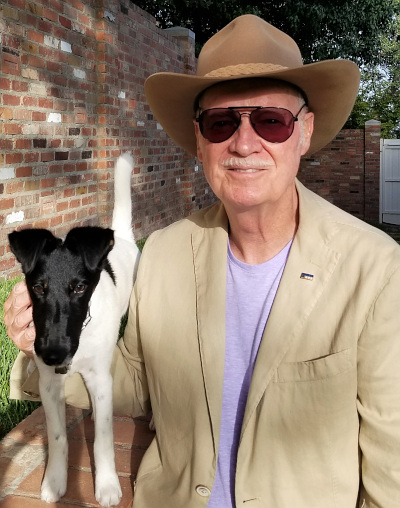
James Hughes Callahan and Sarah Medissa Day were settlers who were in the forefront of the cultural, economic, and political changes in south central Texas during the mid-1800s. They were also everyday people. A native Georgian, Callahan migrated to Texas to serve in the Texas Revolution in exchange for land, eventually escaping execution as a prisoner of that conflict. He settled in Seguin, Texas, where he met and fell in love with divorcee, Sarah Medissa Day. Her family's journey and their colorful lives reflect what was typical for many new Texas immigrants immediately after its war of independence up to the Civil War. In a relatively short period of history, these two Texas pioneers would experience the effects of conflict, break social mores, and participate in the dawning of new industry, and their lifetimes were intertwined with the formation and evolution of societies.
Texas Rangers, Ranchers, and Realtors: James Hughes Callahan and the Day Family in the Guadalupe River Basin unfolds the lives of the Callahan family to provide a canvas on which to explore the people and the communities in the valleys of the San Marcos, Guadalupe, and Blanco Rivers during the formative decades of the mid-nineteenth century. Through their simple yet extraordinary lives, they helped sculpt Texas culture endowing it with many of the characteristics it is known for today.
The presentation, entitled "The cattle stompeded last night," will focus on the 1854 cattle drive from Seguin, Texas, to Warner's Ranch, California. Hired by Michael Erskine, Callahan organized and led a herd of 1054 cattle and arrived with 814; the most successful of the 25 herds that year that left Texas. The six-month trip passed through some of the most desolate, and also spectacular, parts of Texas, western United States, and Mexico. The cattle drive was vexed by little grass and rain, Indian raids, quarrelsome drovers, and stampedes. Two first-hand accounts, including that by Erskine, provide a unique perspective of daily life and hazards for men, cattle, and horses who weathered the 1500-mile trip. Once, in California, Callahan returned by ship passing along the Mexican coast to Panama and across the isthmus for another voyage to Havana, New Orleans, and finally to Texas. The colorful episode is virtually unknown or discussed by historians.
Meet Thomas O. McDonald, PhD
Thomas O. McDonald is a retired R&D pharmaceutical executive, an independent scholar of Texas history, and a seventh-generation Texan. In 2004, he retired from Alcon Laboratories, an American pharmaceutical company specializing in eye care products. Thomas holds a Bachelor of Science and a Master of Science in Biology from Texas Christian University. He earned his PhD in Cell Biology from Tulane University and completed the International Senior Managers Program at Harvard Business School.
Thomas has published numerous articles in scientific and medical journals. Moreover, he was a key member or leader of technical teams in profiling and developing new medications and devices for treating ocular diseases, such as glaucoma, cataracts, eye allergies, and ocular infections. Since retirement, Thomas has immersed his time in exploring early Texas history at the local level, resulting in the 2021 publication of Texas Rangers, Ranchers, and Realtors: James Hughes Callahan and the Day Family in the Guadalupe River Basin, published by the University of Oklahoma Press. Thomas is an advocate of preservation of local historic records and documents. He is currently writing a narrative on the first fifty-year history (1947-1997) of Alcon Laboratories.

The Texas Rangers have served in many different roles as the needs of an evolving Texas have changed, from a Mexican territory to an independent republic to one of the United States. William L. Wright's ancestors served in all these phases of Texas History, and he became one of the "Big Four" Ranger captains of the first half of the twentieth century. He worked as a Ranger under seven governors, from the twilight of the frontier era through Prohibition and the oil boom between the first and second world wars. He earned a place in the Texas Ranger Hall of Fame in Waco, and his achievements underscore the fact that the Texas Rangers, as a human agency, have their heroes as well as villains.
Meet Richard B. McCaslin, PhD
Richard B. McCaslin, TSHA Professor of Texas History at the University of North Texas, is the author or editor of nineteen books. These include Tainted Breeze: The Great Hanging at Gainesville, Texas, October 1862, which earned a Tullis Prize and AASLH commendation, Lee in the Shadow of Washington, which won a Laney Prize and Slatten Award and was nominated for a Pulitzer, Fighting Stock: John S. "Rip" Ford of Texas, which got a Pate Award and Bates Award, At the Heart of Texas: One Hundred Years of the Texas State Historical Association, 1897-1997, which won an Award of Merit from the Texas Philosophical Society, and Saratoga on the Cibolo: Sutherland Springs, Texas, which received a Publication Award from the San Antonio Conservation Society. His Tennessee volume for the Portraits of Conflict series earned the Douglas Southall Freeman Award, and the series received an AASLH commendation. A Fellow of the Texas State Historical Association and Admiral in the Texas Navy, he also has commendations from the Civil War Round Tables in Dallas, Fort Worth, and Shreveport for his academic work on the Civil War era.
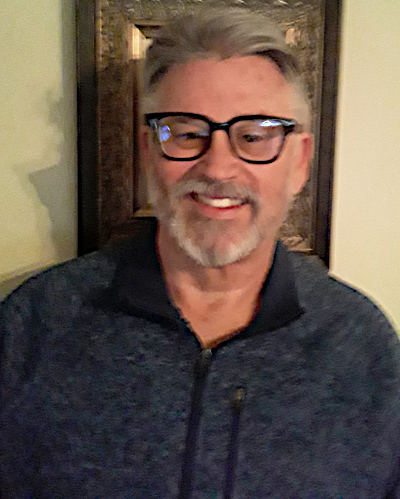
A vast and desolate region, the Texas–New Mexico borderlands have long been an ideal setting for intrigue and illegal dealings—never more so than in the lawless early days of cattle trafficking and trade among the Plains tribes and Comancheros. James Blackshear's program will take us to the borderlands in the 1860s and 1870s for an in-depth look at Union-Confederate skullduggery amid the infamous Comanche-Comanchero trade in stolen Texas livestock. Peopled with Rebels and bluecoats, Comanches and Comancheros, Texas cattlemen and New Mexican merchants, opportunistic Indian agents and Anglo arms dealers, the program will illustrate how central these contested borderlands were to the history of the American West.
Meet James Blackshear
James is a professor of Texas and U.S. history at the University of North Texas Dallas. He has published several articles and three books on the Southwest, including Honor and Defiance: The History of the Las Vegas Land Grant in New Mexico; Fort Bascom: Soldiers, Comancheros and Indians in the Canadian River Valley; and Confederates and Comancheros: Skullduggery and Double-Dealing in the Texas-New Mexico Borderlands (co-authored with Glenn Sample Ely, PhD).
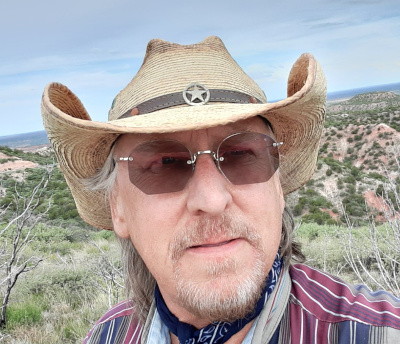
Camp Van Camp was a United States military expeditionary camp located outside what is currently Fort Stockton, Texas, in 1859. The mission of the Pecos Expedition was to explore the unknown territory and to interdict Comanche and Apache Indians whose attacks on westward emigrants, settlers, freighters and stagecoaches were increasing in the areas of West Texas. At the time there was little-to-no defense where expansion was occurring. The westward traffic was taking place on two main roads: The Butterfield Road and Upper Emigrant Road and the San Antonio to El Paso Road Lower Emigrant Road. These roads were increasingly filled with mail coaches, freighters and emigrants that ran right across the Comanche War Trail and into hostile Apache territory. Camp Stockton and Camp Van Camp's Pecos Expedition were an attempt to interdict the Indians and establish a new line of defense further west.
This was the first archeological investigation to determine forensically the full layout of an 1850/60s expeditionary encampment within the western United States. We were able to determine the exact layout of the encampment that included an infantry company that constructed, maintained and guarded the camp, and two cavalry companies that used the camp as their base of operations for the patrols up and down the Comanche War Trail. Through extensive research of military documents and four site visits to this previously untouched camp, we were able to reconstruct fully the entire site layout as well as the daily routes of this four-and-a-half month expedition into the stark expanse of the Pecos River region and far West Texas.
Meet Tom Ashmore
Tom Ashmore spent 21 years in the Air Force as a special intelligence analyst. After retiring as an analyst, he worked as a contractor teaching intelligence skills for the Air Force Intelligence School for 20 years at Goodfellow AFB, Texas. As a member and vice president of the Concho Valley Archeological Society, he headed up archeological investigations of Butterfield's Overland Mail's Johnson's Station in Irion County, Grape Creek Station in Coke County and Horsehead Crossing Station in Crane County. He also headed up investigations of Paint Rock 1800s Historic Camp Sites in Concho County; Tower Hill Military Lookout in Sterling County; and ancient rock shelters in the Lower Pecos region of Texas, working with both Conch Valley and the Iraan Archeological Societies. He completed a book in 2019 on his Butterfield Trail investigations, The Butterfield Trail Through the Concho Valley and West Texas. He is currently a member of the Iraan Archeological Society and the Southwest Federation of Archeological Societies (SWFAS). He has written several articles for Desert Tracks publications and SWFAS transactions over the years.
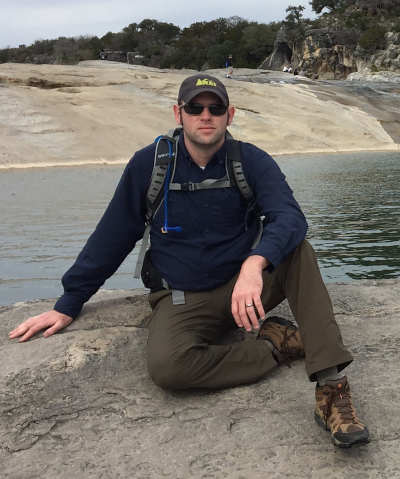
Between 1849 and 1921 American expansion into the southern plains forced the Bent family to adapt to a new social and political order. Increasingly, mixed-race families like theirs became objects of suspicion and fear. Drawn by the lure of gold and land, white settlers flooded into the Southern Cheyenne homeland triggering a decade of bloody conflict. But despite the horrors of Sand Creek and the Washita, the Bents continued to be adept politicians and intercultural brokers. Acting as federal Indian agents, interpreters, and historians, the Bent men aided the survival of their Native kin in Colorado and Indian Territory. The family's women forged new ties to prominent ranchers and businessmen in the borderlands, becoming the mothers of new communities. Rather than being emblems of a "passing era" of Western history, the Bents proved remarkably resilient in the face of long odds.
Meet David Beyreis
David Beyreis is a historian of the Great Plains and North American borderlands, and a member of the Fort Worth Westerners. He is the author of Blood in the Borderlands: Conflict, Kinship, and the Bent Family, 1821-1920 and articles in Montana: The Magazine of Western History, Kansas History, and The Journal of the Early Republic. His work has received a Wrangler Western Heritage Award from the National Cowboy Museum and Western Heritage Museum and was a finalist for the Western Writers of America's Spur Award. His current research focuses on intercultural diplomacy on the northern plains during the nineteenth century. He received his PhD from the University of Oklahoma, currently teaches history at Ursuline Academy of Dallas, and is a member of the Fort Worth Westerners.
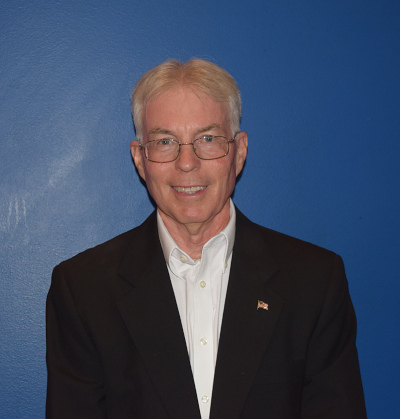
In "Native Americans of Texas," James Everett will briefly examine the history and anthropology of the major Native American groups/tribes who lived in Texas between 1528 and 1875, concentrating on the 1800s.
Meet James Everett
James Everett has participated in prehistoric and historic period archeological projects in many areas of Texas as well as in New Mexico and Arizona. He is a Past President of the Texas Archeological Society, the Immediate Past President of the North Texas Archeological Society, and an Archeological Steward for the Texas Historical Commission.